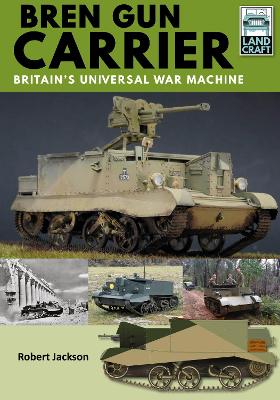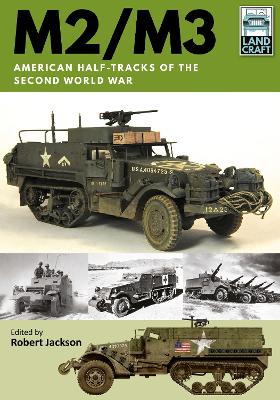Land Craft
2 total works
One of the most versatile fighting vehicles in the British army and many other forces for a quarter of a century, the Universal Carrier - more popularly known by its original title of Bren Gun Carrier - was developed as a fast and agile infantry-support vehicle. In this volume in Pen & Sword's LandCraft series, Robert Jackson traces its design and manufacturing history and describes its operational role throughout its long career.
The Bren Carrier served in every theatre of the Second World War, from northwest Europe, North Africa and the Soviet Union to the Far East. Then, with the war over, it was operated by many belligerents in a string of other conflicts around the world, including Israel's struggle for independence and the war in Korea.
A selection of archive photographs showing the Bren Carrier in action gives a graphic impression of how adaptable it was and records the variety of equipment it could carry. The book is an excellent source for the modeller, providing details of available kits together with specially commissioned colour profiles which illustrate how the Bren Carriers used by different units and armies appeared.
The Bren Carrier served in every theatre of the Second World War, from northwest Europe, North Africa and the Soviet Union to the Far East. Then, with the war over, it was operated by many belligerents in a string of other conflicts around the world, including Israel's struggle for independence and the war in Korea.
A selection of archive photographs showing the Bren Carrier in action gives a graphic impression of how adaptable it was and records the variety of equipment it could carry. The book is an excellent source for the modeller, providing details of available kits together with specially commissioned colour profiles which illustrate how the Bren Carriers used by different units and armies appeared.
Among the most successful armoured vehicles produced by American industry - known as the Arsenal of Democracy - during the Second World War were the M2 and M3 half-tracks. They served on every battlefront and were as recognizable as other famous American wartime vehicles like the Sherman and the Jeep, and around 40,000 were produced between 1941 and 1945\. They were easy to assemble, operate and maintain, and their versatility allowed them to fulfil a variety of purposes. This volume in Pen & Sword's LandCraft series traces the design, development and manufacturing history of the M2/M3 and describes its operational role within the Allied armies.
A selection of archive photographs showing the M2/M3 in action gives a graphic impression of how adaptable these vehicles were and records the range of equipment they could carry. The book is an excellent source for the modeller, providing details of available kits, together with specially commissioned colour profiles demonstrating how the M2/M3 used by different units and armies appeared.
A selection of archive photographs showing the M2/M3 in action gives a graphic impression of how adaptable these vehicles were and records the range of equipment they could carry. The book is an excellent source for the modeller, providing details of available kits, together with specially commissioned colour profiles demonstrating how the M2/M3 used by different units and armies appeared.

